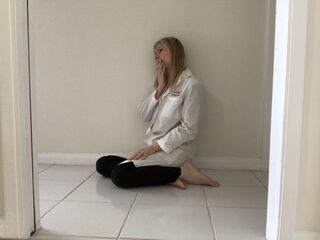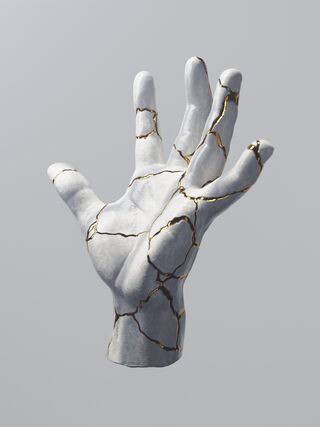Therapy
The Brain Exercise That Got Me Out of Anxiety and Depression
A Personal Perspective: The Gestalt therapy session that helped me the most.
Posted December 23, 2021 Reviewed by Vanessa Lancaster
Key points
- Twelve years ago, when I was suffering intense anxiety and depression, I went to my Gestalt therapist for a session I remember to this day.
- Research shows that Gestalt therapy can enhance positive emotions.
- Research also shows that Gestalt therapy can be highly effective in increasing the ability to face challenges.

When I was at my lowest point with intense anxiety and depression, a Gestalt therapy brain exercise changed my life for the better.
Steve, my husband of 12 years, had passed away eight months prior from very aggressive brain cancer and life had lost its meaning.
Who was I without him? Why should I continue working in my private practice? For whom? We had no children (I used to explain that we had no children because, after 12 years of marriage, we were still on our honeymoon). Should I even continue living? Chances that I would find a man I could be in love with as much as I was in love with Steve were minimal. My future looked grim. Grim was not the right term. It was pitch-black.
Being a physician and prescribing medications, I knew I probably needed to take an antidepressant treatment. Yet, I resisted: “Let me try one more thing. Let me try Gestalt therapy.”
Gestalt therapy is a form of psychotherapy (developed by Fritz Perls) that brings awareness to the present moment. Gestalt therapy makes you focus on what you are feeling inside your body in the moment and on what random thoughts are attached to those feelings.
I was familiar with Gestalt therapy because I had done several sessions myself in the past and had successfully treated several of my patients suffering from anxiety.
I decided to visit my Gestalt therapist.
Bringing my awareness to my body after making me breathe deeply and relax, my Gestalt therapist asked me what I was feeling. I said that my stomach, chest, and throat felt tight.
Was there a random image associated with that feeling?
I could only see pitch-black all around with no light anywhere in my life, and I felt chained to a huge heavy black ball. I tried to look away from the dark but couldn’t. The huge black ball became the only thing I could see.
At this point, my therapist pushed me to do one Gestalt exercise that changed my life. For that exercise, my therapist said, I had to come from the point of view of curiosity, full acceptance and embrace whatever I would discover, and trust that it would get me to a better place.
My therapist said, “Since you can’t go away from the dark, let's go into the dark and describe what you see.”
It was a very scary exercise. I wouldn’t recommend doing that exercise alone, but you can do it with a therapist guiding you.
And into the dark, my therapist by my side, I dove.
For a long time, I couldn’t see anything but black, but my therapist told me to continue looking into the black ball, to imagine going deeper into it and seeing it in more detail. What was the ball made of? Was it homogeneous or not? Were there different stones in there?
As I continued looking into the dark with my eyes closed, I began seeing different shades of black. The ball wasn’t homogenous. I found that fascinating.
As I continued going deeper, like looking through an imaginary microscope, a few scintillating dots appeared. I focused on the dots. They were like golden stars in a black sky.
As I kept my eyes closed, the few scintillating dots transformed into gold. After a few minutes, the gold was so bright that it was the only thing I could see. I was astonished to see how ugly the ball was from the outside but how beautiful it was inside.
I was also astonished that the tightness in my stomach, chest, and throat had lifted. I was actually feeling quite good.
The pitch-black ball was a metaphor for my life: It could look ugly from the outside but beautiful inside.
The Gestalt exercise goal was to then figure out what could be golden in my dark life.
As I looked into my life with an open heart, I realized that what was gold was simply appreciating being alive and the simple pleasures of life.
When I came back home, I started appreciating what was gold in my life: the smell of roses on my daily walks, the taste of toasted bread and fresh fruits, the view of the ocean, the breeze on my skin while walking.
A few months later, I made new friends and appreciated the deep friendships.
Finally, four years later, I met Eric, the man who would become my new husband, and I found love and passion again. I didn’t think I would be lucky enough to find the love of my life twice, but I did.
And that journey of coming from a pitch-black place and arriving in a bright, golden place made my happiness even more intense.
My journey gave me perspective on life. I now know that tomorrow is a promise to no one, and I am acutely aware that I need to grab today’s every happy moment with intense joy without being afraid of tomorrow.

I now realize my life is like the Japanese art of Kintsugi with broken pieces put back together with gold seams creating something uniquely imperfect, uniquely precious, and uniquely mine.
And it all started when I had the courage to dive into the darkness with an open mind.
No matter how dark life is, there is always gold to be found. Finding this can be done with the help of Gestalt therapy.
Studies on Gestalt therapy have shown that a group of older people who had one 90 minute-session of Gestalt therapy a week for eight consecutive weeks experienced a significant increase in happiness compared to the no-Gestalt therapy group.
Studies of divorced women have shown a significant increase in their ability to face challenges competently after 12 Gestalt therapy sessions.
And Gestalt therapy for caregivers of Alzheimer’s patients enhanced the positive emotions of those caregivers, decreased their loneliness, and increased their ability to give care.
So, if you or your loved one is experiencing anxiety or depression, contact a therapist right away. Even if you are taking anti-anxiety or antidepressant pills, a few Gestalt sessions in addition to the pills might do wonders.
To find a therapist near you, visit the Psychology Today Therapy Directory.
Copyright 2021 @ Chris Gilbert, MD, PhD




